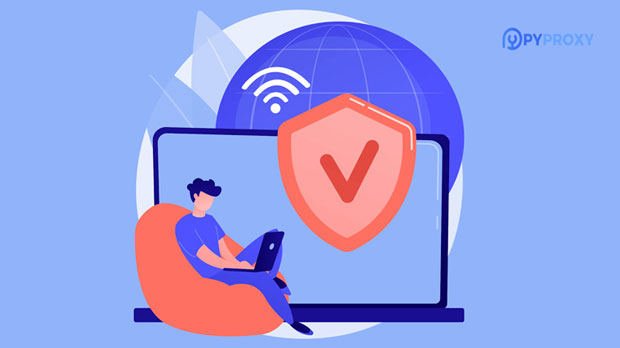How do I prevent information leakage when an proxy changes to a specific IP address?
When switching to a specific IP address using a proxy, there are multiple risks associated with data leakage that can compromise sensitive information. Whether it’s for enhanced security, anonymity, or accessing geo-restricted content, taking proper precautions is crucial. Information leakage may occur if proxies are misconfigured, or if users fail to implement strong security practices. This article explores how to mitigate risks and ensure privacy when changing IP addresses via proxies. By analyzing potential vulnerabilities and outlining effective methods to safeguard data, users can maximize the benefits of proxies without exposing themselves to unnecessary threats. Understanding Information Leakage RisksBefore diving into how to prevent information leakage, it is essential to understand the key risks involved when using proxies. Information leakage refers to unintended or unauthorized exposure of sensitive data during online activities. It can happen in various ways, including through misconfigured proxies, poorly implemented encryption, or even human error. These leaks could reveal a user’s real IP address, location, browsing activity, or even sensitive data like login credentials.The main cause of information leakage often lies in technical missteps or inadequate security practices when switching between proxies. For example, a common risk is failing to correctly configure the proxy to fully hide the real IP address, leaving traces of the original IP visible to websites or third-party services. This can expose the user's identity, location, and personal information, leading to security vulnerabilities such as hacking, tracking, or privacy violations.Risks of Data Exposure When Switching IP AddressesWhen switching to a specific IP address using a proxy, the danger of data exposure increases if the proxy service is not configured correctly. One of the most significant risks involves a proxy server that leaks the user's actual IP address or other identifying information, such as device identifiers or browser fingerprint data. This kind of leakage can lead to tracking and profiling by malicious actors, potentially putting sensitive information, like login credentials or financial data, at risk.Another risk arises when the proxy itself is compromised, whether through vulnerabilities or an untrusted proxy provider. Hackers can exploit such weaknesses, intercepting communications between the user and the websites they visit. This exposes users to risks of data theft, man-in-the-middle attacks, and identity theft.Additionally, some proxies may not adequately encrypt traffic, leaving data unprotected during transmission. In such cases, even if users switch IP addresses, their data could be intercepted or tampered with by attackers, posing a significant privacy risk.Key Strategies to Prevent Information LeakageTo prevent information leakage while using proxies, it's important to implement specific strategies. These strategies focus on securing both the configuration of the proxy and the traffic passing through it.1. Use a Secure, Configured ProxyThe first line of defense against information leakage is to ensure that the proxy service is secure and correctly configured. It is crucial to use a proxy service that employs strong encryption protocols such as HTTPS, TLS, or SSL. This will safeguard your data while it’s transmitted through the proxy, protecting it from interception.Moreover, it’s important to double-check the proxy settings. For example, enabling DNS and WebRTC leak protection can prevent accidental exposure of the real IP address. Many proxies and VPN services offer these features, and they should be enabled to add an extra layer of protection against leaks.2. Use Multi-Factor Authentication (MFA)Implementing multi-factor authentication (MFA) is a useful way to ensure that even if a malicious actor gains access to some part of your information, they cannot easily exploit it. MFA requires a second layer of verification, such as an SMS code, email verification, or a fingerprint scan, in addition to the usual login credentials.By enabling MFA, you reduce the chances of a successful attack. Even if an attacker learns the IP address or other identifying information, they still cannot gain access to your accounts without the second authentication factor.3. Monitor IP Address Changes and LeaksConstant vigilance is required to prevent information leakage when switching IP addresses. Using online tools to regularly check the IP address visible to websites is one way to ensure your proxy is working as intended. By frequently testing your IP address, you can verify that the proxy is masking your real IP address and not leaking any personal information.Furthermore, monitoring the traffic flow between your device and the websites you visit helps identify any discrepancies or leaks. If there’s ever a situation where your real IP is exposed, it’s important to immediately reconfigure the proxy or switch to a different one to restore privacy.4. Use End-to-End EncryptionEnd-to-end encryption is an effective way to ensure that your data remains private and secure, even when using a proxy. With this encryption, the data is encrypted from your device all the way to the recipient, meaning that even the proxy server cannot view or alter the content of your communication.This is particularly important when accessing sensitive services, such as online banking or personal email accounts. Even if the proxy is compromised, end-to-end encryption ensures that your private data remains confidential.5. Avoid Public or Untrusted ProxiesPublic proxies, especially free ones, are often unreliable and insecure. These proxies may not have adequate protection against data leakage and could even be set up with the intention of stealing your information. Untrusted proxies are also more likely to be compromised by hackers, leaving your data vulnerable.For a higher level of security, always opt for private proxies that are well-reviewed, trusted, and known for their commitment to privacy. Additionally, make sure these proxies have a clear no-logs policy, which means they do not store any information about your browsing activities or identity.6. Keep Software and Devices UpdatedAnother essential method for preventing information leakage is ensuring that both your software and devices are up to date. Software updates often include security patches that protect against newly discovered vulnerabilities. By keeping your operating system, browser, and any other relevant software updated, you reduce the risk of exposing sensitive data through flaws in outdated software.Additionally, make sure your devices are protected with strong passwords and, where possible, use firewalls and antivirus software to further secure your network and data.ConclusionWhen switching to a specific IP address with a proxy, preventing information leakage is critical to maintaining security and privacy. By employing secure configurations, using encryption, regularly monitoring IP address changes, and opting for trusted proxies, users can safeguard their sensitive data. It’s also essential to implement multi-factor authentication, avoid public proxies, and keep devices updated. With these strategies in place, you can effectively reduce the risks of information leakage and ensure a secure, private online experience when using proxies.
2025-01-17

























































